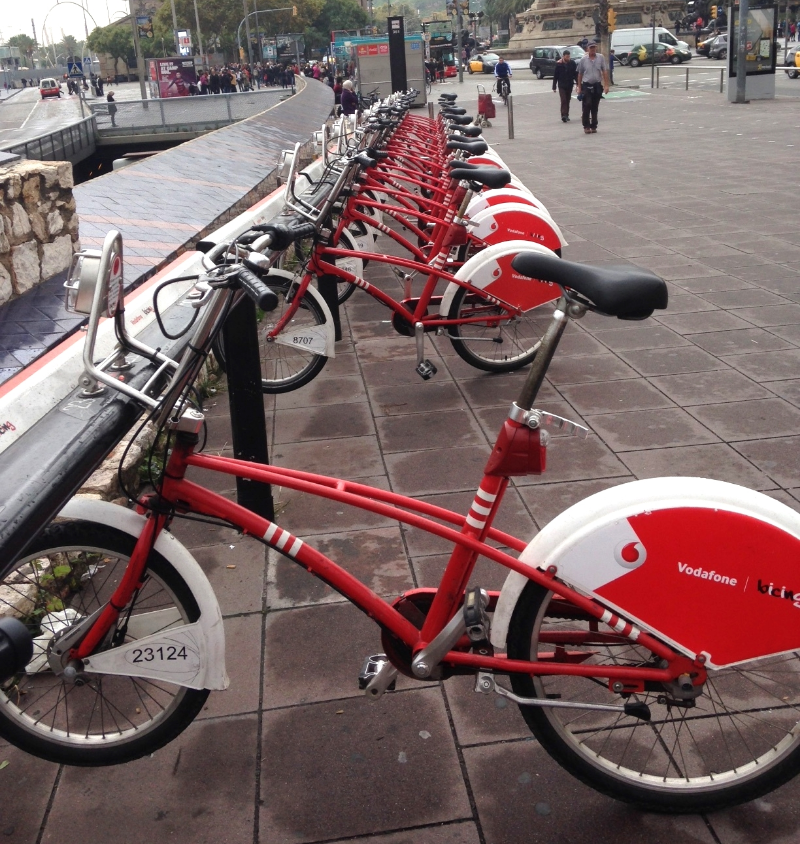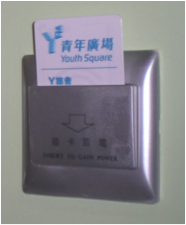A few weeks ago, I had the privilege of taking a two week vacation to Spain. The trip was wonderful, and included architectural and historical gems such as the Mezquita in Cordoba, the Alhambra in Granada, and Sagrada Familia in Barcelona, as well as an abundance of delicious tapas. When I travel, my inner eco-nerd likes to keep an eye out for visible differences in energy and environmental awareness. Of course I was expecting to admire and envy the high-speed rail, efficient public transportation system, and well-developed walking and biking infrastructure prevalent in most European cities. However, I also noticed some smaller differences in technology and behaviors that I would love to see here in the United States.

Timed common area lights: I have never owned a home and most of my rental situations have been apartment buildings, so this was one of my favorite finds. You know the hallway lights in your apartment complex that are always on, regardless of the time of day or night? Several Spanish apartment buildings and hotels have timed light switches by the door and entryways that you use to switch on when you’re entering the common area hallway. Then the lights stay on for approximately the time it takes you to climb the stairs to your apartment. It sounds simple, but none of the apartment buildings in the U.S. have had a similar feature that I’ve experienced. All of these hours of electricity saved must make a big difference. (Of course it was less welcome in bathroom stalls, but whatever it takes to save energy, right?!)

Key cards that control your hotel room’s electricity: This one was a little confusing when I first ran across it (largely due to some gaps in my Spanish vocabulary), but I rapidly came to love it. Several of the hotels I stayed in had a slot by right inside the hotel doorway, where I had to insert my keys in order to turn my electricity on. This is great (especially for jetlagged, forgetful travelers) because it prevents you from accidently leavings your lights and AC on when you are not in your hotel room. As an added bonus, it’s impossible to lose your key in the hotel room and your thermostat can’t be set to sub-zero temperatures while you are gone.
Behavior differences: Spain, particularly Southern Spain, is hot. High mid afternoon temperatures are the historical drivers of the siesta, which gave farm workers a respite from the midday heat. Despite the heat, I found that relatively few establishments relied heavily on AC. In fact, I was warned sternly by several hotels and Airbnb hosts not to leave the AC on when I left the room. One person even posted signs in their apartment indicating that I would be fined if I left the AC on while away. Luckily, I found leaving my windows open to cool down my rooms to be highly effective, even on the 90+ degree days.

Line-drying clothes: Ok, I admit this last one is not realistic for everyone. But if I had a beautiful sunny rooftop terrace, as several Spanish buildings seem to have, I would line-dry my clothes all the time. Does it take a little extra time to hang clothes up? Yes. But it’s a great excuse to spend a few minutes outside on the lovely terrace while no energy but your own physical is used!
My dreams of a U.S. where cities have highly efficient public transportation systems and are connected by high-speed rail may not exist for many years. However, I’m sure some of the changes discussed above could be implemented in the next few years. I’ll keep my fingers crossed!

